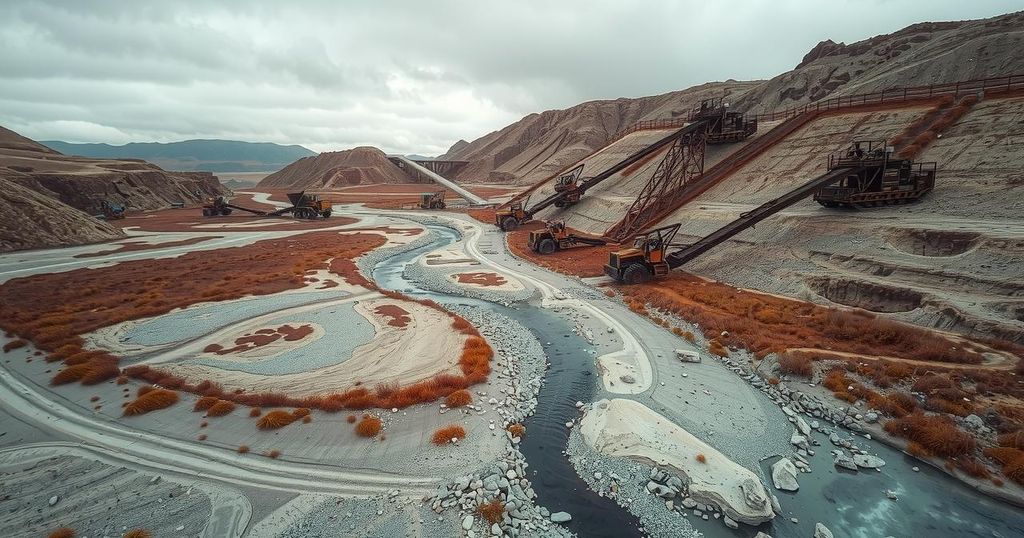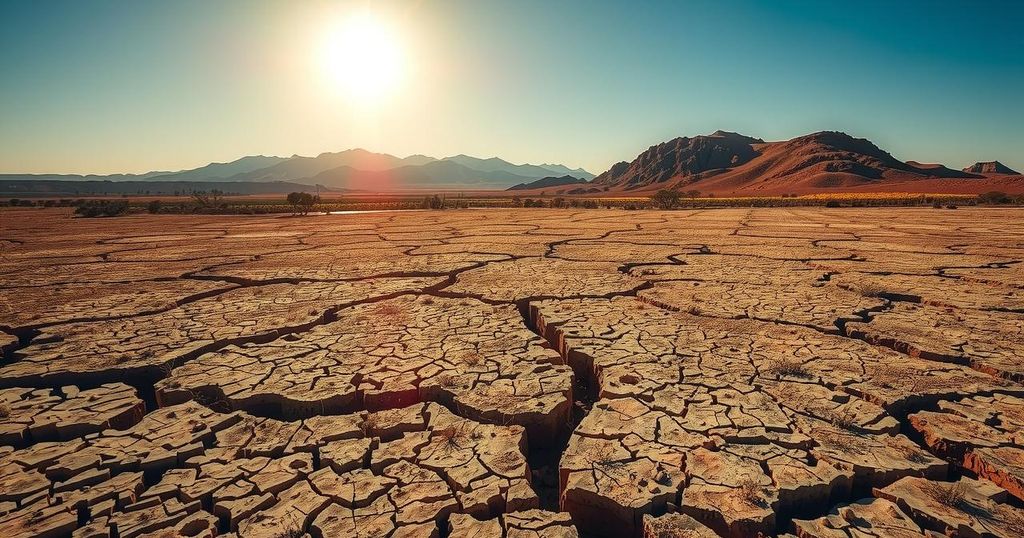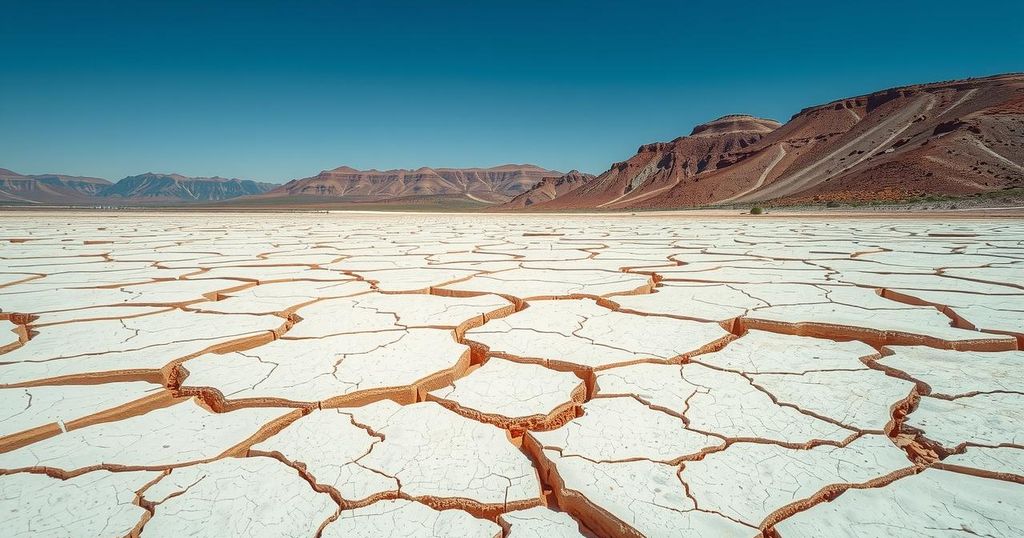Climate change
ASIA, BRAZIL, CERRO SAN SEBASTIÁN, CID, CIDIA CORTÉS, CLIMATE CHANGE, COMMERCE GROUP, CONGRESS, DEPARTMENT OF LA UNION, EL SALVADOR, ENVIRONMENTAL IMPACT, FUNES, GRACIE, GRACIELA FUNES, HERITAGE PRESERVATION, NAY, NAYIB BUKELE, NORTH AMERICA, OFFICE FOR THE DEFENSE OF HUMAN RIGHTS, PHILIPPINES, POLLUTION, SALVADOR, SAN SEBASTIÁN, SOUTH AMERICA, VIDALINA MORALES
Leila Ramsay
0 Comments
Environmental and Economic Dilemmas: The Mining Controversy in El Salvador
The revival of mining in El Salvador raises concerns about environmental degradation, particularly regarding the San Sebastián River’s contamination. While the government claims substantial gold reserves promising economic benefits, environmentalists warn of dire consequences stemming from mining activities. Analysts present a divided perspective on economic development versus ecological protection, questioning the reality of the purported resources.
The San Sebastián River in El Salvador is bereft of fish due to contamination from a former gold mine. With the recent repeal of the ban on metal mining, concerns arise that similar contamination could occur elsewhere in the country. President Nayib Bukele’s decision, backed by an undisclosed study, suggests that gold deposits valued at $131 billion exist, potentially revitalizing the struggling economy. However, environmentalists express skepticism about these claims, citing adverse effects such as those seen in the San Sebastián River.
In Santa Rosa de Lima, located 172 kilometers from the capital, wastewater from the long-closed Cerro San Sebastián gold mine contaminates the local river. Community leader Graciela Funes revealed the copper-colored water obtained from the river as evidence of its pollution. “It is not possible for us to allow this situation […], we are human and we all need this vital liquid [water],” she stated. Environmentalist Vidalina Morales supports calls for collective action against mining due to its severe impact on water quality in the agricultural vicinity of La Unión.
Historically significant, the San Sebastián mine was deemed the most productive in Central America for much of the 20th century but left behind substantial environmental damage and health issues for local inhabitants, who resorted to purchasing water to survive. Biologist Cidia Cortés emphasized that resolving such environmental damage remains an unmet obligation for the State, worsened by the renewed mining activities.
Environmental advocates are particularly concerned about potential contamination of the Lempa River, which provides water to approximately 70% of the capital’s population. Conversely, some analysts, like Nelson Flores, argue that mining could offer significant economic opportunities. He asserted, “The country is facing the opportunity to move towards economic development with mining, and there could be better living conditions for the population.”
Nonetheless, the accuracy of the purported gold reserves in El Salvador is contested. Ricardo Navarro of the Salvadoran Center for Appropriate Technology described the estimated quantities as exaggerated, noting that the concentration is low. Economic expert Julia Martínez expressed skepticism about the existence of the gold reserves, suggesting that the government may be misled about the potential benefits and revenue from mining.
The article underscores the tension between environmental concerns and economic aspirations surrounding the reinstatement of metal mining in El Salvador. While proponents argue for potential economic growth, environmentalists highlight the detrimental impact on ecosystems and communities, specifically referencing the pollution of the San Sebastián and Lempa Rivers. The debate continues over the veracity of gold deposit claims and the true costs of mining endeavors, shaping the future of El Salvador’s environmental and economic landscape.
Original Source: ticotimes.net




Post Comment